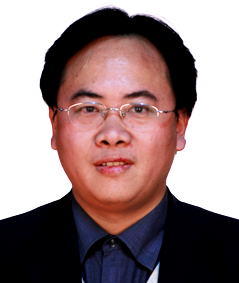IntroductionEducationWork ExperiencePhD, Professor Expert member of the China Compliance Expert Group of the Montreal Protocol on Substances that Deplete the Ozone Layer; Expert member of Asia Pacific Regional Center on the Chemical and Waste Environmental Management under the Basel Convention; Long-term expert of the Foreign Exchange & Cooperation Office (FECO) of the Ministry of Ecology & Environment; Member of the Committee on Ecological & Environmental Toxicology; Long-term expert on methyl bromine compliance management of the United Nations Industrial and Development Organization (UNIDO). In 2017, “Recognizing and Appreciating the Valuable Contributions and Efforts in Protecting the Ozone Layer” jointly awarded and issued by UNEP, UNDP, UNIDO, WB, and FECO. Mainly engaged in "Compliance management on controlled chemical under international treaty and R & D on their alternatives", "Site risk assessment and remediation technology", "Advanced oxidation processes and their applications", "Environmental functional materials", etc. Up to now, undertaking more than 30 projects, publishing over 100 high-level papers, authorizing 5 invention patents, and wining the second prize of the Ministry of Education's Science and Technology Progress Award once. ResearchSite risk assessment Soil microbial fuel cell Advanced oxidation process Environmental function material Teaching
TeachingPostgraduatesEnvironmental assessment and systematic analysis Advanced environmental chemistry Funding
FundingVertical ProjectHorizontal ProjectPublications1. Sun Yuman, Feng, Liu, Yang Lei, Degradation of PCB67 in soil using the heterogenous Fenton process induced by montmorillonite supported nanoscale zero-valent iron, Journal of Hazardous Materials, 2021, 406, 124305. (https://doi.org/10.1016/j.jhazmat.2020.124305) 2. Dong HC, Yoneda M, Feng L. Risk dynamic evolution index based on fraction transformation and its application to site risk assessment, Journal of hazardous Materials, 2021, 412, 125210; (https://doi.org/10.1016/j.jhazmat.2021.125210) 3. Dong HC, Xun Y., Yoneda M, Feng L. Risk assessment of complex contaminated sites based on the fractional transformation of metals: model development and a case study, Science of the Total Environment, 2021, 786, 147509. (https://doi.org/10.1016/j.scitotenv.2021.147509) 4. Hou S., Dong HC., Du XK., Feng L. Early warning on risk development in compound lead and cadmium contaminated sites, Journal of Hazardous Materials, 2021, 416, 126174. (https://doi.org/10.1016/j.jhazmat.2021.126174) 5. Dong HC, Lin Z, Wan X, Feng L.*Risk assessment for the mercury polluted site near a pesticide plant in Changsha, Hunan, China,Chemosphere, 2017, 169, 333-341 6. Wan X, Dong HC, Feng L*, Lin Z, Luo Q Comparison of three sequential extraction procedures for arsenic fractionation in highly polluted sites,Chemosphere, 2017, 178, 402-410 7. Zheng MX, Feng L*, He JN, et al. Delayed geochemical hazard: a tool for risk assessment of heavy metal polluted sites and case study,Journal of Hazardous Materials, 2015, 287, 197-206 8. Dong HC, Feng L*, Qin Y, et al. Comparison of different sequential extraction procedures for mercury fractionation in polluted soils, Environmental Science and Pollution Research, 2019, 10, 9955-9965 9. Zhu T., Feng L., Cao CW., Effects of arsenic on bioelectricity output and anode microbial community of soil microbial fuel cells in arsenic–petroleum hydrocarbon contaminated soils, Journal of Chemical Technology and Biotechnology, 2022, DOI: 10.1002/jctb.7226 10. Yu B., Feng L., He YL., Yang L., Xun Y. Effects of anode materials on the performance and anode microbial community of soil microbial fuel cell, Journal of Hazardous Materials, 2021, 401, 123394. (https://doi.org/10.1016/j.jhazmat.2020.123394) 11. Yu B, Li YH, Feng L.*Enhancing the performance of soil microbial fuel cells by using a bentonite-Fe and Fe3O4 modified anode, Journal of Hazardous Materials, 2019, 377, 70-77 12. Yu B, Tian J, Feng L.*Remediation of PAH polluted soils using a soil microbial fuel cell: Influence of electrode interval and role of microbial community, Journal of Hazardous Materials, 2017, 336,110-118 Awards
AwardsPatentHonor RewardAdmissions Information |

